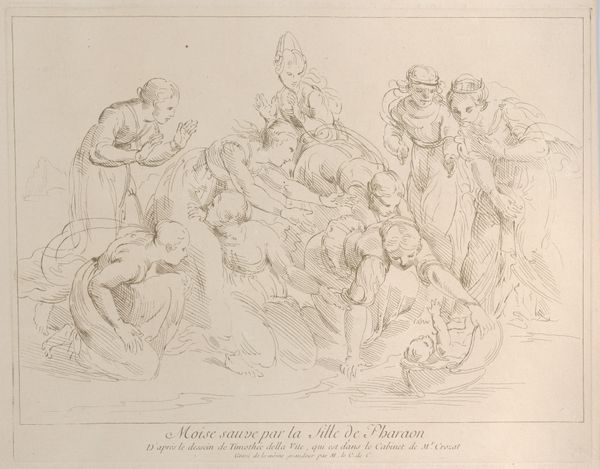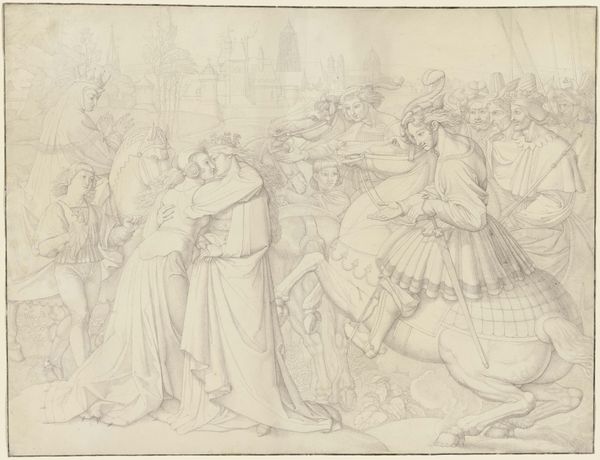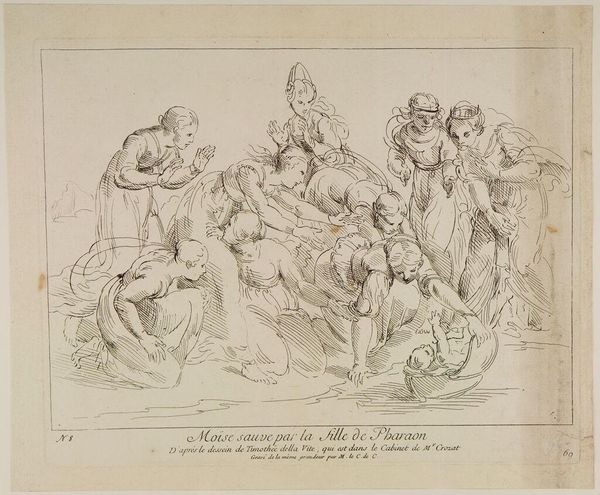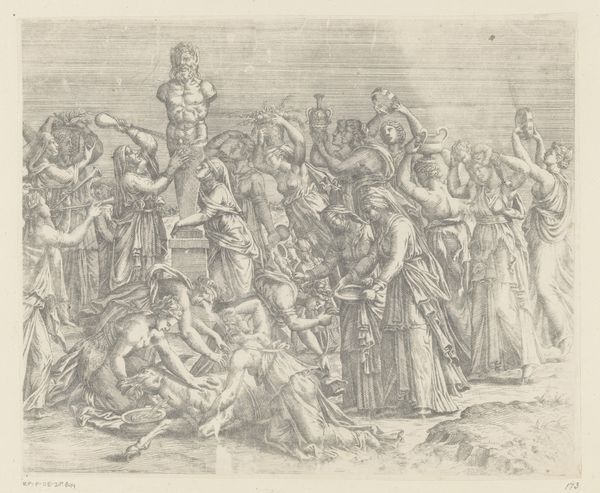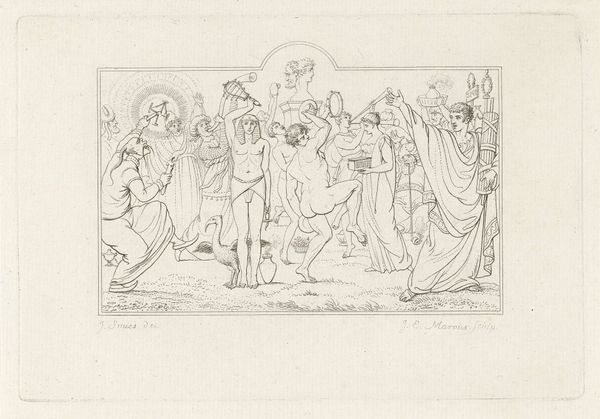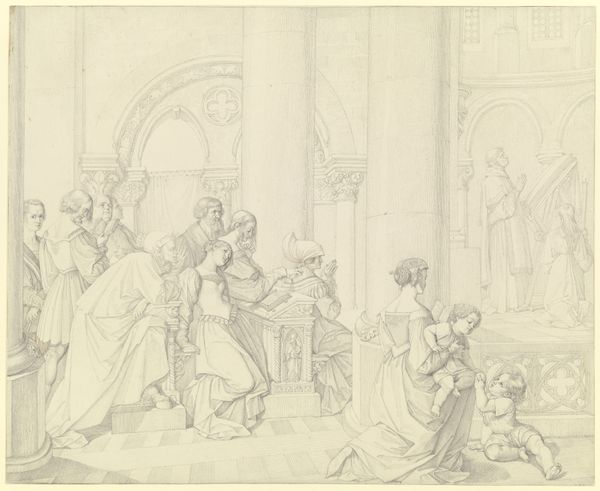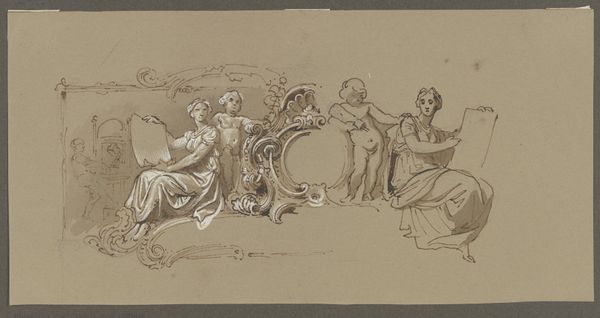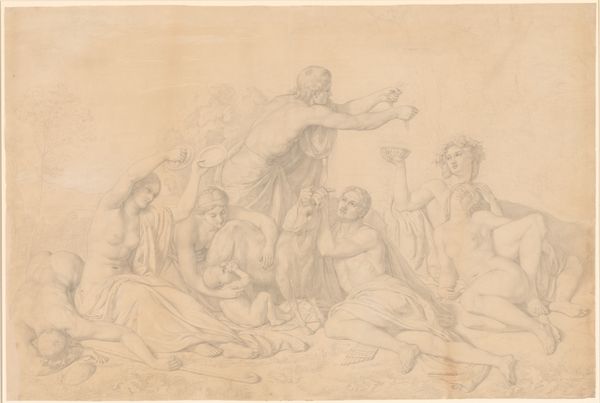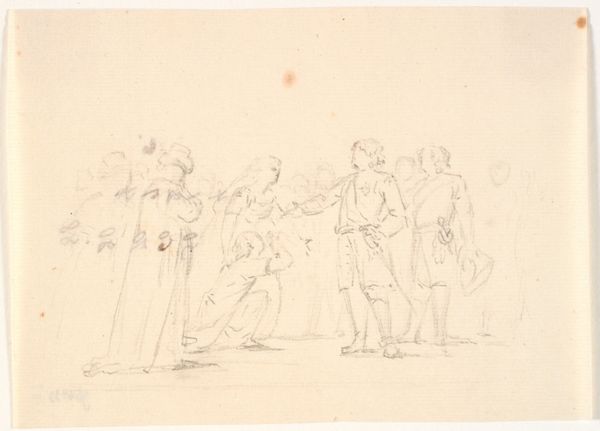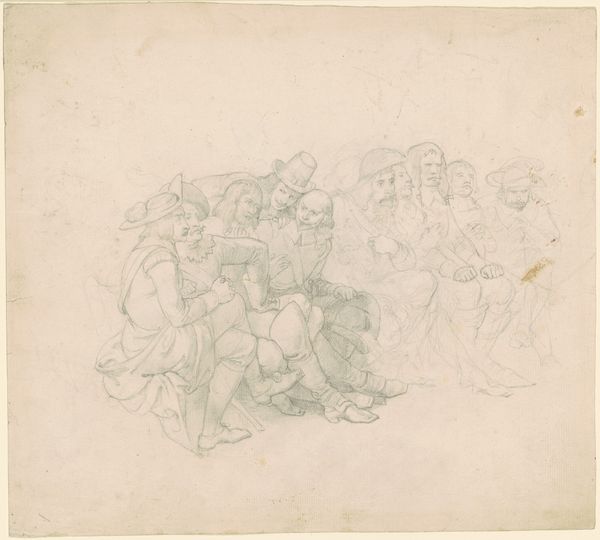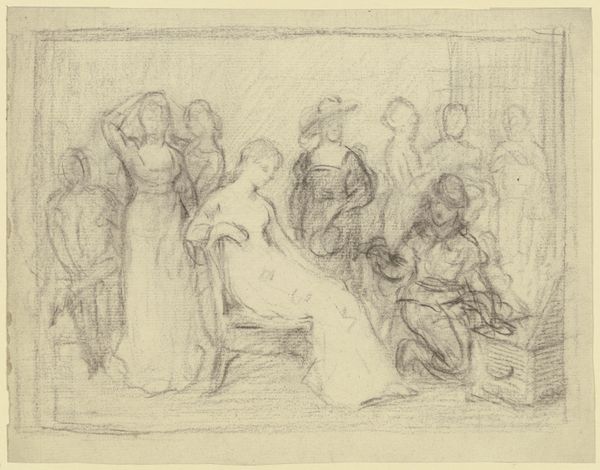
drawing
#
drawing
#
narrative-art
#
group-portraits
#
history-painting
#
academic-art
Dimensions: 240 mm (height) x 317 mm (width) (bladmaal)
C.G. Kratzenstein Stub made this drawing of Pharaoh's Daughter Finding Moses in Denmark around the turn of the 19th century. Stub illustrates a scene of rescue and redemption from the Book of Exodus. But the meaning of this imagery was powerfully inflected by the social and political context in which it was made. In Stub's Denmark, the state church held considerable sway over cultural production, including art. Biblical scenes afforded a powerful means of conveying moral lessons and reinforcing social hierarchies. Stub’s refined drawing style, with its emphasis on classical forms, would have appealed to the tastes of the Danish elite, whose patronage sustained artists like Stub. But by drawing on this widely known story of Moses, Stub also tapped into deeper cultural narratives of liberation and divine providence. Understanding art like this requires us to delve into the culture and institutions that shaped its creation.
Comments
No comments
Be the first to comment and join the conversation on the ultimate creative platform.
